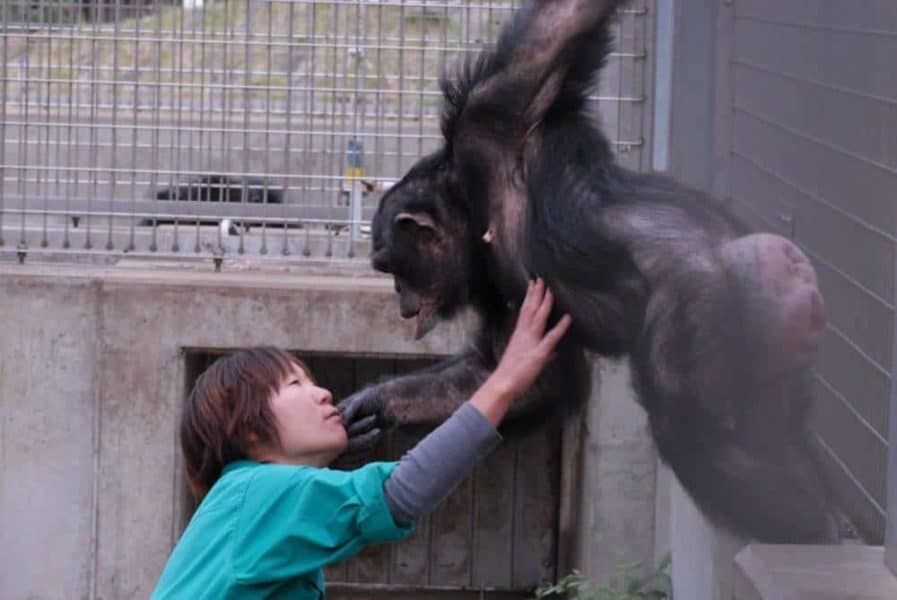Japanese researchers have confirmed the second case known to science of a chimpanzee born with trisomy 22, a chromosomal defect similar to that of Down syndrome (or trisomy 21) in humans. The report1 on Kanako, a 24-year-old female chimp born into captivity, was led by Satoshi Hirata of Kyoto University in Japan, and appears in the journal Primates², published by Springer. The authors also describe their attempts to improve the quality of life of this chimpanzee, through providing and managing opportunities for normal social interaction. Such efforts are seen as key in caring for disabled chimpanzees in captivity.
Human cells normally contain 23 pairs of chromosomes, for a total of 46. Down syndrome occurs when a person’s cells contain a third copy of chromosome 21 (also known as trisomy 21). In turn, apes have 24 pairs of chromosomes, for a total of 48. Trisomy 22 is diagnosed when the cells of apes such as chimpanzees, gorillas or orangutans contain a third copy of chromosome 22.
The first confirmed case of a chimpanzee with trisomy 22 was documented in 1969. The chimpanzee described nearly five decades ago died before its second birthday. This means that Kanako is the longest living chimp with this chromosomal disorder that scientists are aware of.
Kanako was born in captivity in 1992, at a facility which was transferred to Kyoto University in 2011 and renamed as Kumamoto Sanctuary, Wildlife Research Centre. She experienced stunted growth from an early age, suffers from a congenital heart disease and has underdeveloped teeth. Kanako developed cataracts before the age of one, and became blind by the age of seven. Having cross eyes and suffering from a disorder that causes the progressive thinning of her corneas count among her vision problems. These symptoms are also common in human Down syndrome.
Kanako’s heart condition was only picked up in 2014 during a routine physical examination. An echocardiogram showed that she has an atrial septal defect, or a so-called “hole” in the wall, that separates the top two chambers of the heart. These results then prompted the research team to conduct further chromosomal analysis, which confirmed that she had trisomy 22.
Her blindness makes social interaction with other chimpanzees difficult, but not impossible. She lived separated from other chimps to avoid aggressive interactions, but was provided with the opportunity to interact with another female chimp named Roman once a month. Roman has been calm and friendly to Kanako from the start.
Because Kanako’s development was not systematically investigated over the years, it is difficult to speculate whether trisomy 22 has caused any specific retardation.
“However, the lack of abnormalities noted in her daily care-taking before the age of one, except for neonatal inactivity and limp limbs, suggests that there was no severe retardation in her behavioral development,” says Hirata.
It is still unclear how common trisomy 22 is among chimpanzees. Last year, news reports from Tanzania for instance highlighted the case of a baby chimp suspected of having “Down syndrome,” but chromosomal tests could not be conducted.
“It is difficult to estimate the probability of a rare event using a small population, but given that around 500 chimpanzees have been born in captivity in Japan, the probability of this autosomal trisomy in chimpanzees may be comparable to that of trisomy 21 in humans, which occurs in up to 1 in 600 births,” speculates Hirata.
If our reporting has informed or inspired you, please consider making a donation. Every contribution, no matter the size, empowers us to continue delivering accurate, engaging, and trustworthy science and medical news. Independent journalism requires time, effort, and resources—your support ensures we can keep uncovering the stories that matter most to you.
Join us in making knowledge accessible and impactful. Thank you for standing with us!

